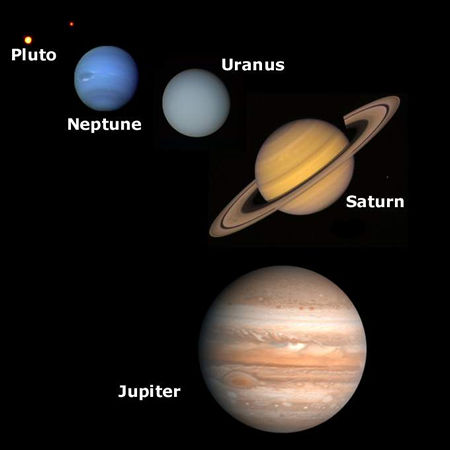The outer planets
The outer giant gaseous or Jovian planets: Jupiter, Saturn, Uranus and Neptune, are much more massive than the inner, terrestrial, planets and have immense atmospheres composed mainly of hydrogen (H) and helium (He). They have no solid surfaces and their densities, averaging less than 2 g/cm3, are so low that if Saturn could fit in an ocean, it would float on the water. Each of the outer planets has a magnetic field, a ring system, and many satellites.

| Copyright owned by the State of Victoria (Department of Education and Early Childhood Development). Used with Permission. |